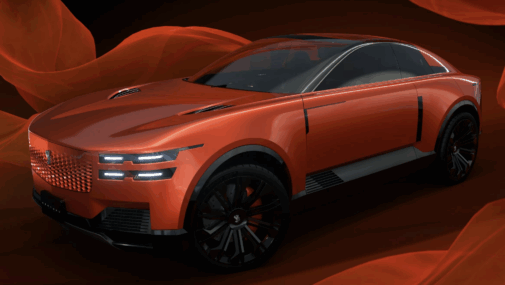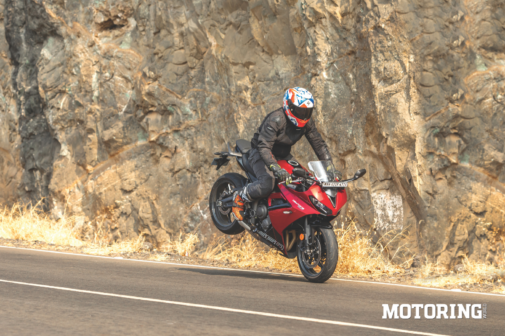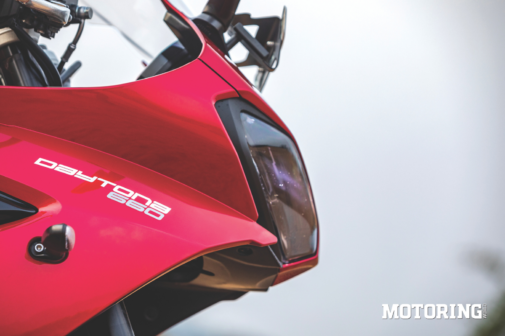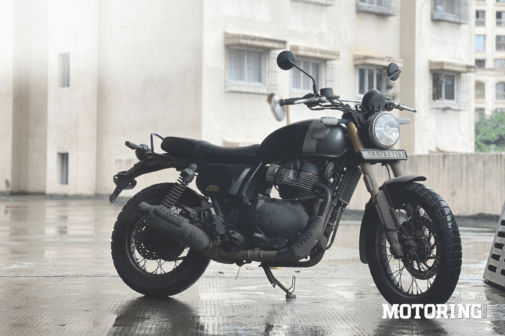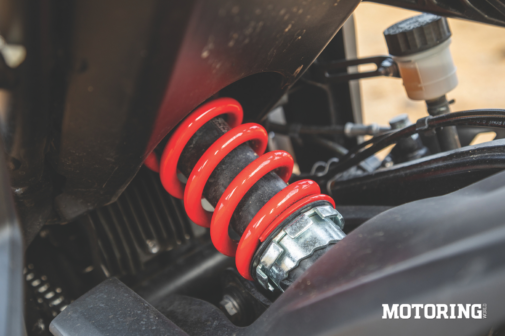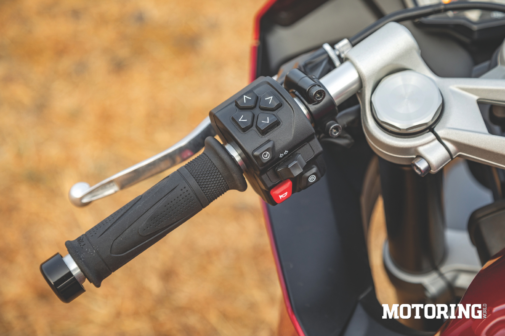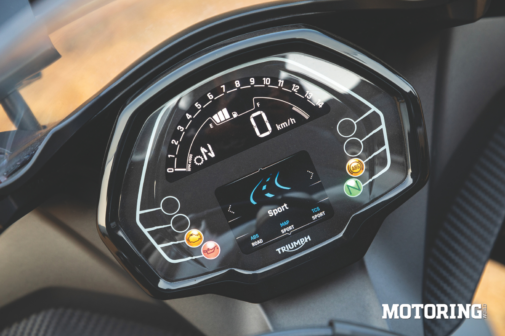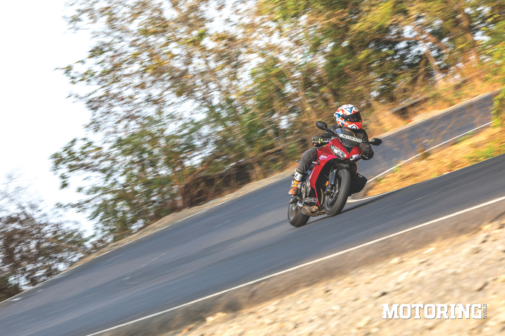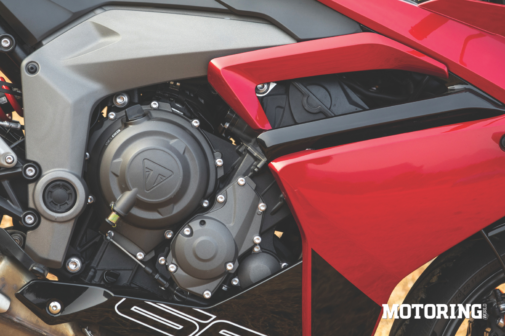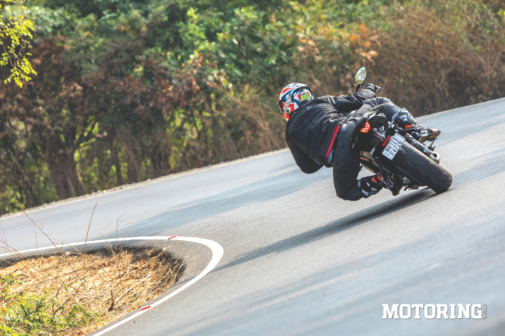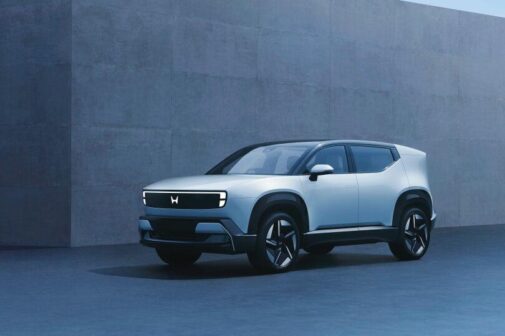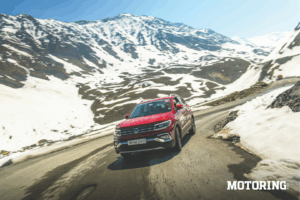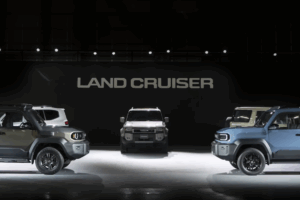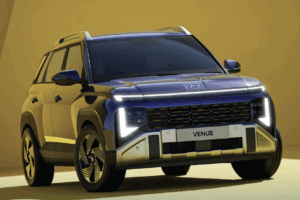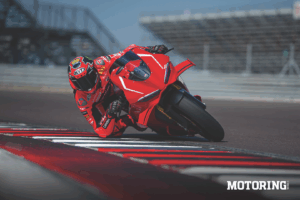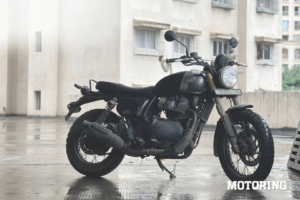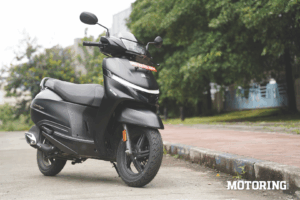The new Triumph Daytona 660 was quickly dismissed by many, including me, as unworthy of the iconic the Daytona badge, Keyboard warriors went all guns blazing on how the new bike fell short on performance, its underpinnings and even styling for some, compared to the last one — the Daytona 675. But it’s not entirely our fault, is it? After all, Hinckley did tease us with the limited-run Daytona 765 Moto2. So, if you are seeking validation for your assumption that the Daytona 660 is not a step up from the previous model, here it is — yes, the new Daytona is not more powerful, nor is it sharp or stiff enough like the old one. Perhaps it was not meant to be that way, at all.
But it seemed like the pressure to be a ‘true’ Daytona got to the 660. To me, it’s a visually appealing motorcycle from almost all angles. The aggressive-looking headlights, the chiselled fuel tank, the sharp, layered fairing and the compact tail made this Daytona’s sporty intentions very clear. But then there were some parts that came across as Triumph’s desperate attempt to assert this bike’s lineage. For starters, the air intake that sits between the headlights is purely an aesthetic detail. Then there are the covers near the rider footrests that are meant to replicate the look of an aluminium perimeter frame. Triumph didn’t have to do that to make the 660 look like a Daytona.
Of course, the things I saw on the screen when the bike was unveiled were now right in front of me, raising even more doubts — what’s with the raised clip-ons? Was not having any adjustability to the Showa BP-SFF (Big Piston-Separate Function Forks) a mere cost-saving decision? To me, this felt like a compromise, making the Daytona nothing more than a sports tourer, but with the Tiger Sport 660 in the picture, why build another one, right?
But Triumph put in a lot of work in the 660cc inline-triple to make it sportier and responsive than the Trident and the Tiger Sport. A new crankshaft, new pistons and wrist pins, a new cylinder head featuring bigger exhaust valves paired with new exhaust cams to provide more lift, three 44-mm throttle bodies instead of one like on the Trident, a larger airbox and changes to the exhaust itself to give the Daytona a unique character. Did Triumph succeed, though?
Yes — and how! Right from the moment I rolled out of my parking lot till the day I grudgingly returned the bike, there was seldom a dull moment with it. Okay, I expected this engine to be a gentleman in the city, but not like that! For the most part, I didn’t have to shift down from fourth, or even fi fth. Forget shifting, it didn’t even need clutch modulation when tackling speed breakers. Heck, I went as low as 24 kph in the sixth, gave it the beans, and moments later I was above the 150-kph mark. It’s almost as if the inline-triple has a dual personality — a civil, polite one under 8000 rpm, and post that it turns into this almost ruffian-like character all the way till its 12,650- rpm redline. Though the engine never hesitated to chase the redline, seeing the LCD rainbow do that was a buzzkill. If Triumph wanted to retain those small details from the previous Daytona, having an old-school analogue tachometer would have been a nice touch; especially since this LCD and TFT combo didn’t look period correct, either. Thankfully, the ride experience was good enough to distract me from the console.
At the risk of repeating myself, the Daytona 660’s ride quality wasn’t fi rm. In fact, it was more plush than I had anticipated. And I am not talking about tackling undulations or even speed breakers. Those were a cakewalk for this bike. What was surprising was how it handled bad and broken roads. In fact, I was happier riding this bike on rough roads than a certain ‘scrambler’ that I had been spending time with. And yes, this kind of ride quality did take a hit on how it tackled corners.
The Michelin Power 6 worked brilliantly on the tarmac, and in fact, so did the Showa suspension… until I started pushing it too much. That’s when the bike would understeer and politely ask me to back off. But when I was reasonable with it, the Daytona would gracefully go through winding roads without breaking a sweat. It wasn’t supersport-like sharp, but was smooth enough for me to keep reminding myself that I didn’t have my knee sliders on… or a racing suit.
Even the Nissin brakes made it abundantly clear that I was not riding a supersport. Not that they lacked stopping power, but the initial bite was rather soft and not as sharp as one would expect from a track machine. Even the electronics (ABS and traction control) were programmed like that. With every launch or even a slightly spirited corner exit, the TC was on high alert, flashing on the console and limiting the power, even though it felt that the chassis and tyres could handle a little more ‘fun’. Thankfully, it had just ‘on’ and ‘off’ settings for the TC. So, nothing complicated. And the ABS? Though it felt a little intrusive at times, it did let me lift the rear wheel for some showing off.
MOTODATA
Triumph Daytona 660POWERTRAIN
Displacement:
Max Power:
Max Torque:
Transmission:
660cc, three-cylinder
93.70 bhp@11,250 rpm
7.03 kgm@8250 rpm
6-speed
CHASSIS
Type: Tubular steel perimeter frame
BRAKES
F/R: 2x310-mm disc / 220-mm disc
TYRES
F/R: 120/70 R17 / 180/55 R17
DIMENSIONS
L/W/H (mm):
Wheelbase:
Ground Clearance:
Seat Height:
Kerb Weight:
Fuel Capacity:
NA/736/1145.2 mm
1425.6 mm
NA
810 mm
201 kg
14 litres
PRICE
Rs. 9.72 LAKH (ex-showroom)









